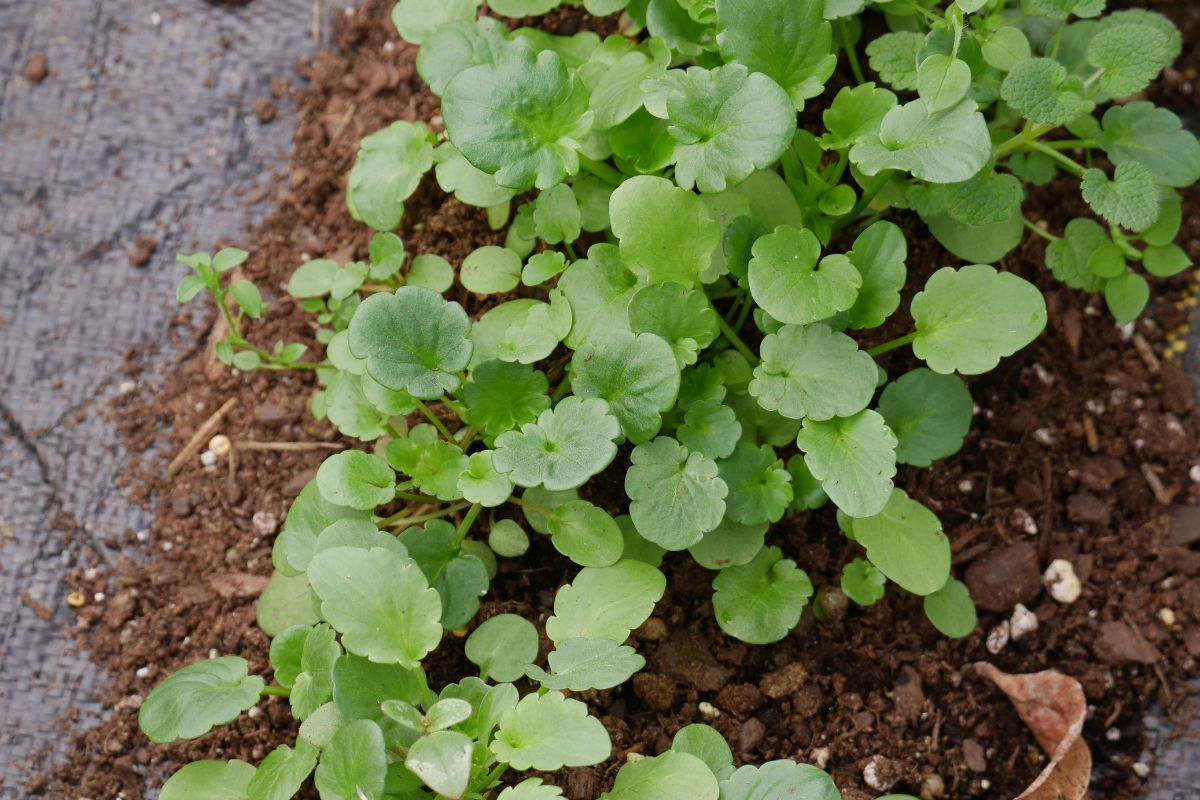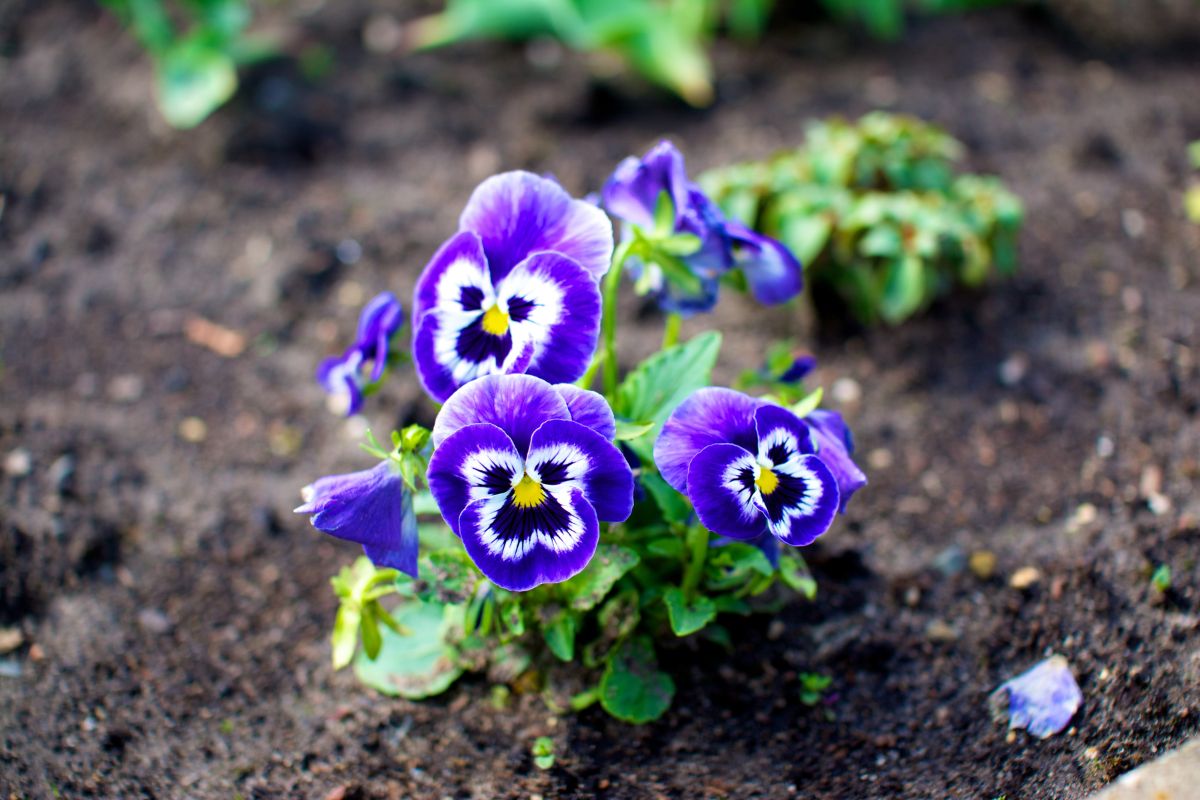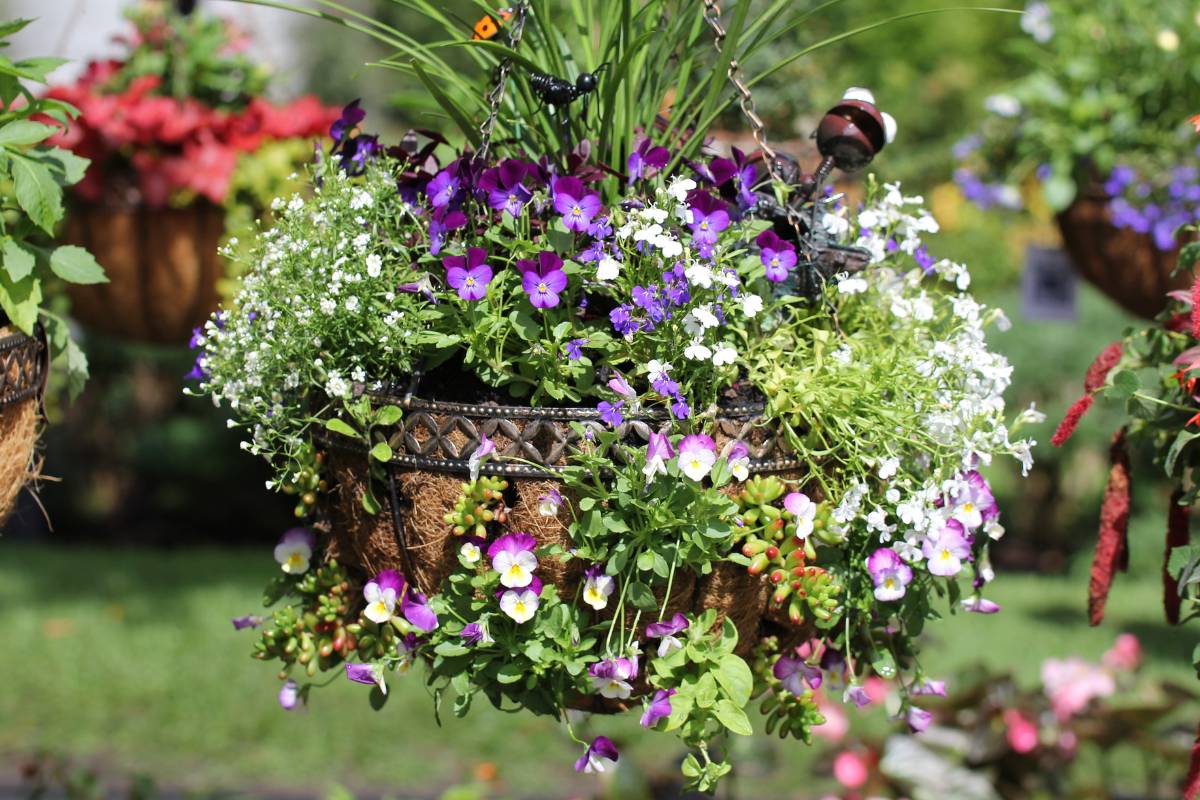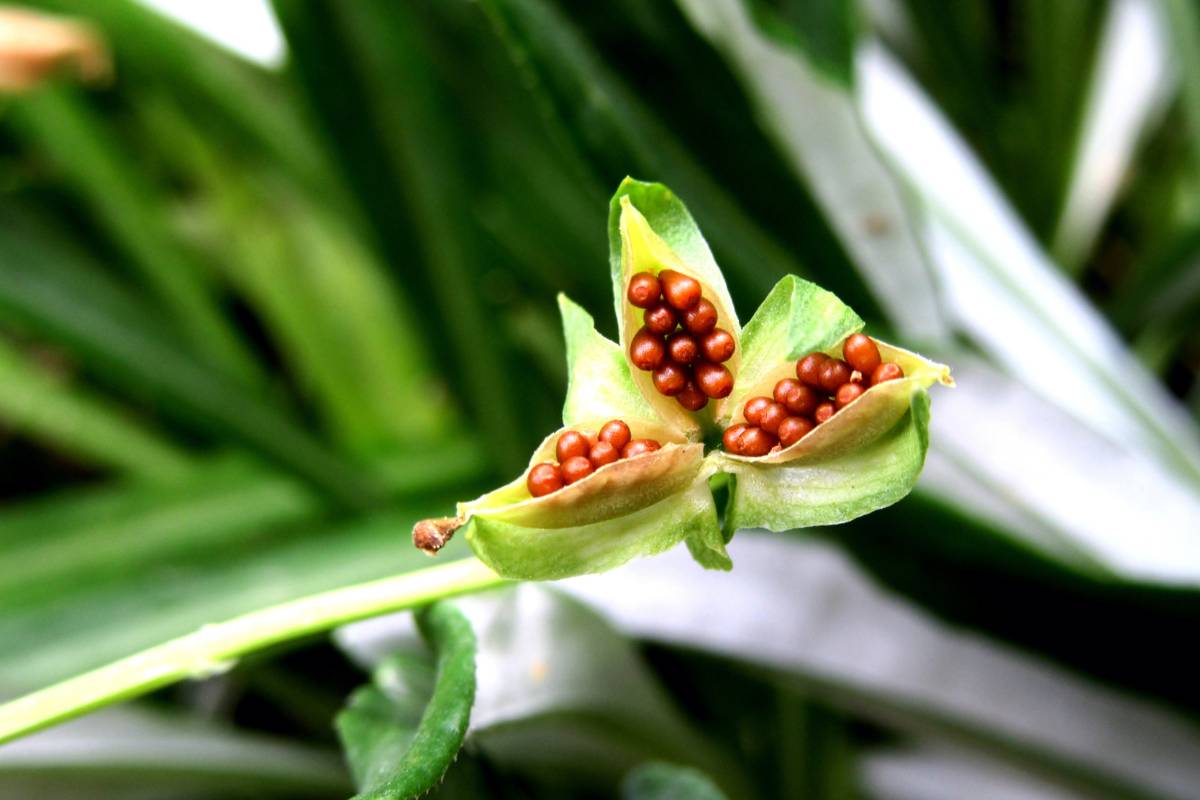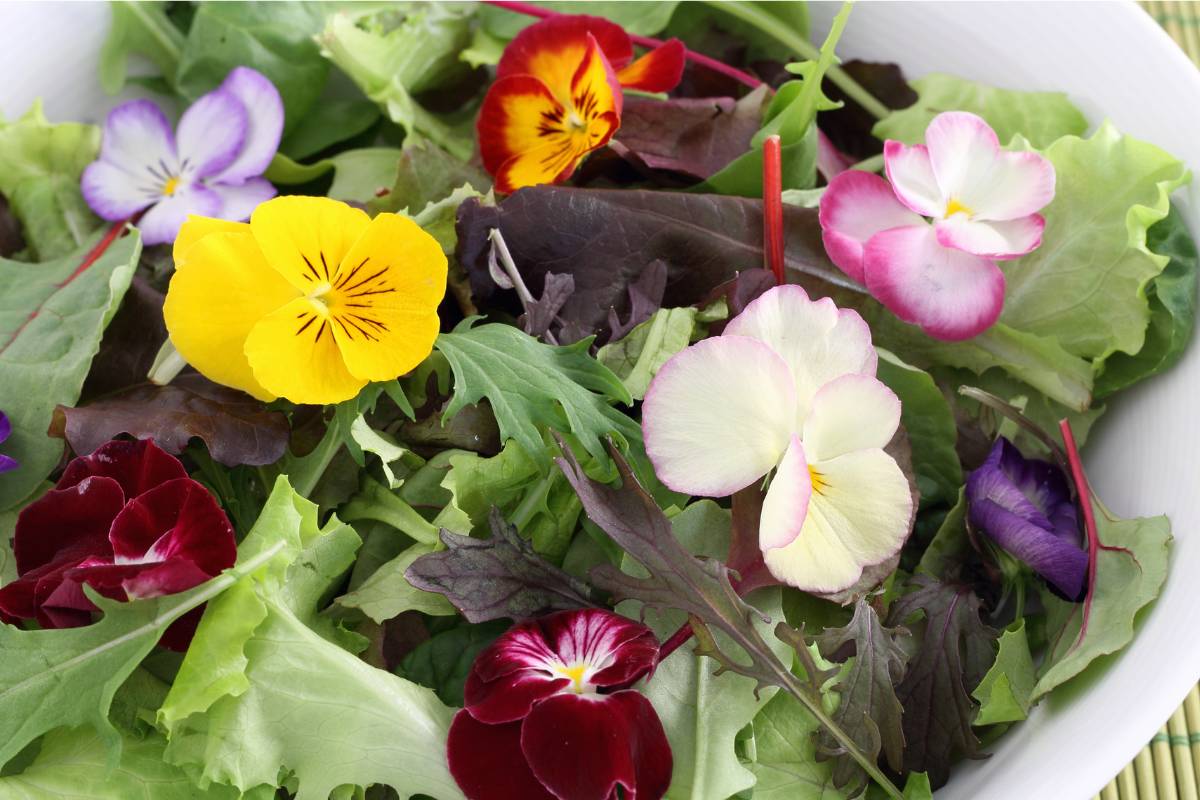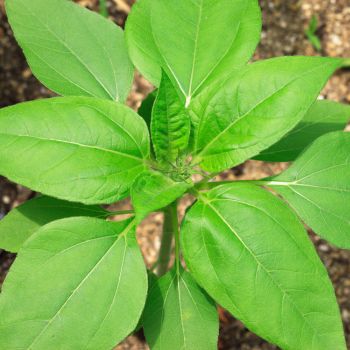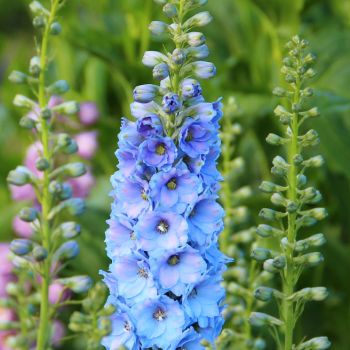Pansies and violas are two of the most popular cool season annuals for home gardeners. Their cheery flowers, resembling upturned faces, brighten up gardens and provide a welcome respite from the grey days of winter.
Both pansies and violas belong to the violet, or Violaceae, family. Technically, both pansies and violas are perennials, but both are usually grown as annuals as they either die back or become straggly and unsightly once flowering has finished.
Recent breeding has blurred the distinction between pansies and violas. Opinions differ as to whether the size of the flowers, petal arrangement or markings should be used to differentiate them. Generally speaking, pansies (Viola wittrockiana) have larger flowers in velvety colours, many with contrasting blotches or ‘eyes’, while violas (Viola cornuta) are smaller mounding plants with dainty, smaller flowers. Johnny jump-ups or heartsease (Viola cornuta or Viola tricolour) have delicate, small flowers in purple, yellow and white. Their common name comes from the easy way they self-seed in many situations.
In Scandinavian folklore, pansies were known as ‘stepmother’ flowers. Rather cruelly, this moniker refers to the arrangement of the petals, with the larger lower petal said to represent the stepmother, the two large upper petals representing her daughters, and the smaller upper petals, often overshadowed and covered by the others, representing her step-daughters.
More commonly, pansy and viola flowers are said to resemble faces, some with beards, wings or ‘whiskers’, the lines radiating from the centre of the flower in a catlike way. Whatever you see in them, the cheerful flowers seem to come imbued with personality and to spark the imagination in a whimsical way.
Sowing The Seed
Seed of pansies and violas can be sown in punnets in late summer to autumn, plus early spring in cold climates. In cool and temperate climates, position plants in full sun if growing them as annuals through winter. In warm climates or if planting in spring, choose a position in part shade, avoiding afternoon sun if possible.
Seeds of pansies and violas germinate best when they are not exposed to light. Sow seeds 6mm deep and cover with enough soil to exclude sunlight. Alternatively, you can place a board or some black plastic over the seeds while they germinate, removing it as soon as possible after the seeds have sprouted. Seeds should germinate in a week or less at a soil temperature of 17 to 21°C. Transplant seedlings to the garden once they have their first true leaves and are large enough to handle, usually 8 to 12 weeks after sowing. Plant out, spacing plants 15cm to 30cm apart.
Cultivation
Pansies and violas prefer moist, rich soil and benefit from a soluble fertiliser to encourage more flowers. They are attractive to both aphids and slugs, so keep an eye out for these pests and take action if needed. Plants can also be susceptible to a range of moulds and mildews; damp soil and too much shade is often the cause so moving pots into a sunny spot can help clear up any outbreaks.
Deadheading will prolong the flowering season, and lightly pruning the plants after the first flush of flowers will stop them from becoming leggy. They are heat-sensitive and may die back over summer, which is why they're usually grown as annuals.
Saving Pansy and Viola Seeds
Saving seeds from pansy and viola plants is easy. Once the flowers fade and the petals shrivel and die, a swollen seed pod develops. The seed pod will dry and split into three segments, revealing the small round seeds inside. The dry seeds can be collected and stored to replant, or left in situ to self-seed.
Pansies and Violas in the Garden
Violas and pansies are versatile plants that can be used in a variety of garden settings. They are perfect for planting in containers to add winter colour and so the cheery flowers can be enjoyed up close. They're small plants, so they can be useful to fill small pots. They also look good in hanging baskets, where their masses of flowers create a good show over a long period.
Being edible, pansies and violas also make excellent companions in the vegetable garden and can be tucked into gaps. Both look good planted en masse and are ideal for edging paths.
Pansies and Violas in the Kitchen
In addition to being a lovely addition to the garden, pansy and viola flowers are also edible. They can be frozen in ice cubes, added to salads, or used as garnishes on cakes and pastries. They can also be pressed or crystallised to use as cake decorations or garnishes.
If the flowers are destined for the kitchen, take care to avoid using chemicals on plants, and harvest early in the morning while the flowers are well hydrated. Harvesting regularly will spur the production of a continual supply of flowers.
Flowers can be stored in the fridge for a few days before using them. Sit them on a damp paper towel in an airtight container, and check it daily to remove any wilted specimens.
Pansies and violas are wonderful cool-season annuals that are easy to grow and care for. With their cheerful, upturned faces and versatile nature, they bring cheer and colour to the dreariest winter day.
